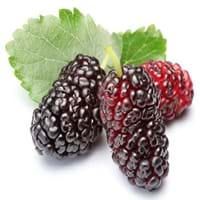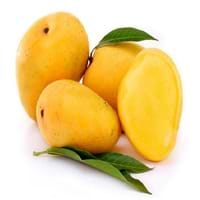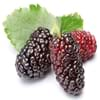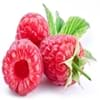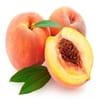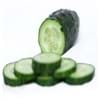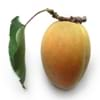Health Benefits
Anti-aging benefits, Boosts immune system, Cancer prevention, Flu treatment, Hair care, Heart care, Improves eye vision, Increases metabolic rate, Kidney stone treatment, Maintains healthy cholesterol level, Skin cleansing, Skin rejuvenation, Treatment of common cold, Treatment of skin Diseases
Cancer prevention, Cures fatigue, Heart care, Prevents strokes
General Benefits
Boosts immune system, Controls blood sugar levels, Flu treatment, Improves eye vision, Maintains healthy cholesterol level, Treatment of common cold
Anti oxidant properties, Boosts immune system, Controls blood pressure, Digestive aid, Improves eye vision, Maintains healthy cholesterol level
Skin Benefits
Anti-aging benefits, Skin cleansing, Treatment of skin diseases
Anti-aging benefits, Brightens and lightens complexion, Skin cleansing, Skin rejuvenation, Treatment of acne, Treatment of blackheads, Treatment of dark spots
Hair Benefits
Protects hair, Regulates hair growth
Good conditioner, Prevents hair loss, Treatment of dandruff
Allergy Symptoms
Breathing difficulty, Itching, Nasal congestion, Redness of eyes, Runny nose, Sneezing
Abdominal pains, Breathing difficulty, Diarrhea, Runny nose, Sneezing, Swelling of mouth, tongue or lips, Watery eyes
Side Effects
Decrease in blood sugar levels, Allergic reaction
Increase in blood sugar level, Diarrhoea, Weight gain
Best Time to Eat
Best if taken as a breakfast (or empty stomach), As a snack in the late afternoon, Don't consume at night and before bed, Eat the fresh ones, avoid mixing with any other foods, don't eat after meal., Morning time (before lunch)
Don't consume at night and before bed, Eat the fresh ones, avoid mixing with any other foods, don't eat after meal., Morning time (before lunch)
Vitamin B5 (Pantothenic Acid)
Not Available
Vitamin C (Ascorbic Acid)
Vitamin K (Phyllochinone)
Calories in Fresh Fruit with Peel
Not Available
Calories in Fresh Fruit without Peel
Not Available
Calories in Canned Form
Not Available
Season
Spring, Summer
Spring, Summer
Varieties
Charparral, Pendula, Teas, Bellaire and Lingan
Alphonso, Valencia Pride, Badami, Chaunsa, Nam Dok Mai, Glenn, Sindhri, Madame Francique, Kesar and Keitt
Color
Pink, Purple, White
Orange, Red, Yellow
Origin
China
Southern Asia
Soil Type
Clay, Loam
Clay, Loam, Sand
Climatic Conditions
Sunny
Humid, Warm to hot climate
Facts about
- It can take up to 10 years for a tree to produce mulberry fruit.
- Mulberry leaves are fed to silkworms to enhance silk production.
- In Germany, they say that devil uses root of mulberry tree to polish his boots.
- A mango tree can bear fruits even after the age of 300 years.
- Height of a mango tree can be as high as 100 feet.
- In India, mango is known as a symbol of love. Also, a mango basket is considered as the sign of friendship.
Other Countries
Colombia, Egypt, India, Indonesia, Kenya, Mexico, Pakistan, Peru, Russia, United States of America
Bangladesh, Brazil, China, Indonesia, Mexico, Nigeria, Pakistan, Philippines, Thailand
Top Importer
Not Available
United States of America
Top Exporter
China
Mexico
Botanical Name
Morus Alba
Mangifera Indica
Synonym
Morus atropurpurea or Morus multicaulis
Not Available
Subkingdom
Tracheobionta
Tracheobionta
Division
Magnoliophyta
Magnoliophyta
Class
Magnoliopsida
Magnoliopsida
Subclass
Alismidae
Rosidae
Family
Moraceae
Anacardiaceae
Species
M. alba
M. indica
Generic Group
Mulberry
Cashew
Difference Between Mulberry and Mango
We might think that Mulberry and Mango are similar with respect to nutritional value and health benefits. But the nutrient content of both fruits is different. Mulberry and Mango Facts such as their taste, shape, color, and size are also distinct. The difference between Mulberry and Mango is explained here.
The amount of calories in 100 gm of fresh Mulberry and Mango with peel is 43.00 kcal and Not Available and the amount of calories without peel is Not Available and 60.00 kcal respectively. Thus, Mulberry and Mango belong to Low Calorie Fruits and Low Calorie Fruits category.These fruits might or might not differ with respect to their scientific classification. The order of Mulberry and Mango is Rosales and Sapindales respectively. Mulberry belongs to Moraceae family and Mango belongs to Anacardiaceae family. Mulberry belongs to Morus genus of M. alba species and Mango belongs to Mangifera genus of M. indica species. Beings plants, both fruits belong to Plantae Kingdom.
